Strong chemicals like pesticides and chemical fertilizers have long been the go-to solution for lawn care. However, they’re not only tough on your wallet, but they also come with numerous environmental, health, and safety concerns. Maybe you’re worried about the planet, the well-being of your loved ones, the sustainability of your lawn care routine, or the health of your soil. Luckily, there are several ways to achieve that lush, green lawn you’ve always desired without having to rely on potentially toxic pesticides and fertilizers.
The best thing is that many of these methods are yard-care tips that you are probably already doing, so tweaking them for better results will be a walk in the park. If you already love mowing your lawn or getting your hands a little dirty, you will also get to enjoy your outdoor chores. However, some of these methods work best when implemented at the very beginning of your journey. So, here is what you can do to grow a healthy lawn organically, starting with the very first step you should consider.
Choose the right grass
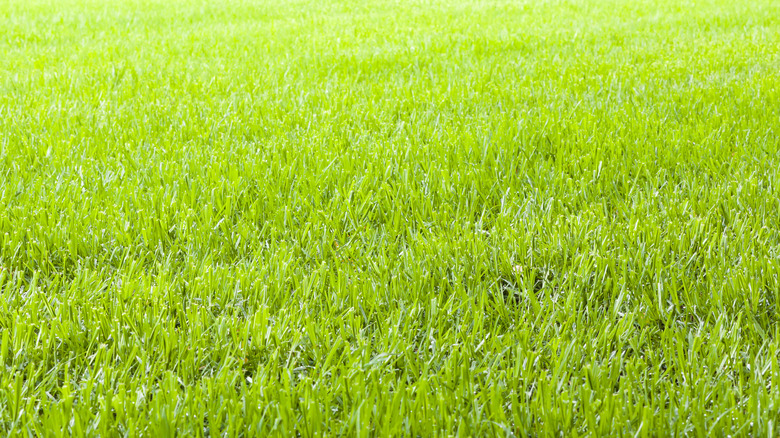
Choosing the right grass variety is the first step to achieving a lush lawn. Various grass types have distinct needs and characteristics. Start by evaluating your local climate because different ones flourish in diverse temperature ranges. If your region’s temperatures tend to drop to about 50 degrees Fahrenheit or lower, select a grass suitable for cooler weather. For example, Kentucky bluegrass, fescue, ryegrass, and tufted hairgrass all thrive in the cold.
Moreover, you must consider sunlight exposure. Some grasses love basking in the sun, while others prefer the shade. The amount of sunlight your lawn gets will impact your choice. Lastly, think about water availability. If you live in an area with water restrictions, choose drought-resistant grasses to keep your lawn healthy with less water. For a sustainable and low-maintenance option, look into native varieties usually adapted to your region’s conditions that require fewer resources to thrive.
Diversify the plant species in your lawn
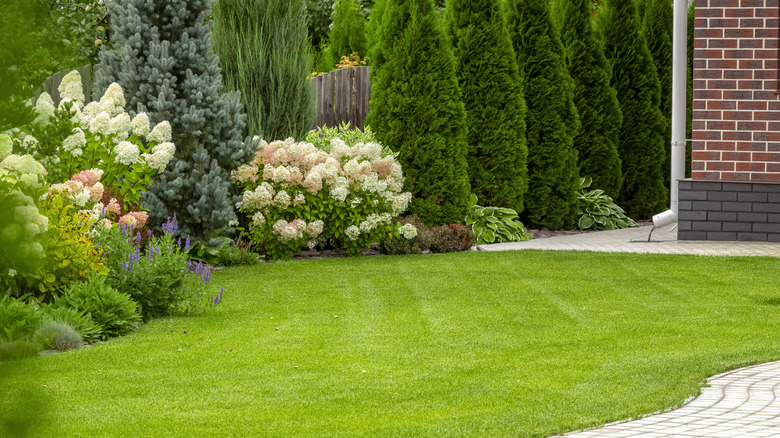
Transforming your yard into a diverse haven isn’t just about aesthetics. You can reap significant environmental benefits if you start by diversifying your plant selection. Instead of sticking to a single grass species, blend various types with native ornamental plants. Monoculture lawns, where one grass reigns supreme, are susceptible to pests and diseases due to the depletion and exhaustion of the soil. However, by incorporating a mix of turf, native species, and ground covers, you foster a resilient and harmonious ecosystem.
This diversity enhances your yard’s ability to withstand environmental challenges. For instance, native plants attract local wildlife like birds and pollinators, promoting biodiversity. They also require fewer pesticides and fertilizers, reducing chemical runoff into waterways. Furthermore, different plants have varying root depths, which improves soil structure and reduces erosion. By embracing a diverse landscape, you contribute to a healthier environment, conserve resources, and create a vibrant, ever-evolving outdoor space.
Practice proper mowing techniques
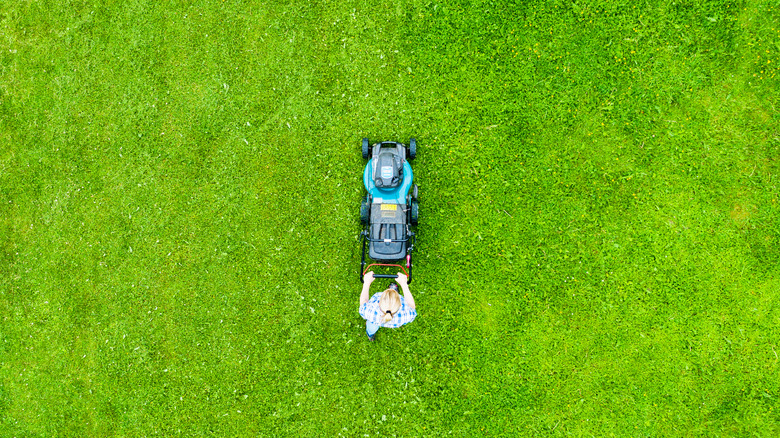
BigTunaOnline/Shutterstock
Proper mowing techniques such as cutting your turf correctly and regularly are essential for maintaining a healthy lawn. But, what is the right lawn mowing length? Ideally, aim for a mowing height of around 2.5 to 3 inches, which is suitable for most grass types. During the summer months, consider leaving it slightly longer, up to about 4 inches. Maintaining the recommended mowing height helps create a natural shade canopy over the soil. This shade serves as a protective barrier, preventing excessive moisture evaporation and keeping it cool.
Taller grass blades help reduce weed competition by blocking sunlight, inhibiting the latter’s growth, and ultimately helping to create a weed-free lawn. However, keeping the turf too long may invite pests and diseases. So, it’s vital to strike a balance. Proper mowing encourages robust root systems which means your grass will be capable of absorbing nutrients better, increasing drought and disease resistance.
Routine overseeding in spring and fall
Mabeline72/Shutterstock
Overseeding is a lawn-maintenance technique where grass seeds are sown directly onto an existing lawn without disturbing the soil or removing the existing turf. By overseeding, you’re effectively increasing the turf density, enhancing the overall appearance of your yard, and strengthening the grass’ ability to withstand foot traffic, pests, and diseases.
Plus, overseeding helps fill up bare or thin areas, erasing those unsightly patches that can mar your garden’s beauty. Denser grass also makes it harder for weeds to grow for some of the reasons that taller grass does, helping reduce the need for artificial pesticides. As the newly planted blades grow and mature, they naturally compete with weeds for sunlight, water, and nutrients. This increased grass density acts as a natural weed deterrent. However, if 50% of your yard is weed-infested, the best option may be a complete renovation. With such a high weed density, there may not even be a place for the new grass to take root.
Consider soil aeration
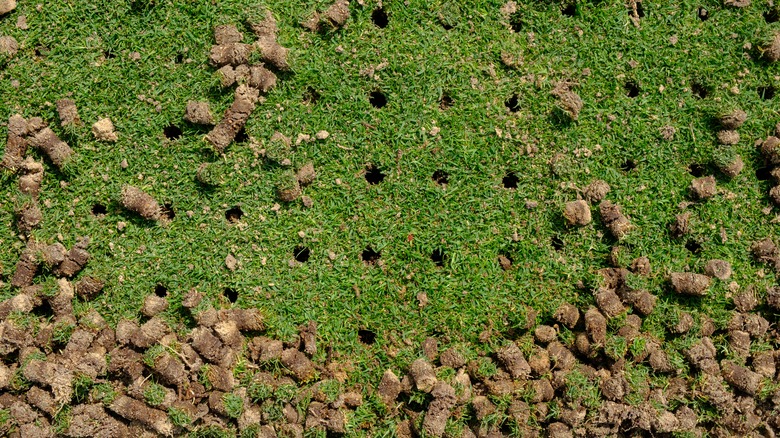
Oldboys/Shutterstock
Soil aeration involves the loosening of soil to enhance the crucial exchange of air within the ground. This process goes beyond merely addressing compacted soil. It’s a fundamental step in fostering the health of your lawn’s root system. One of the foremost benefits of soil aeration is the significant improvement in air circulation within the soil. This facilitates better oxygen intake by the roots, essential for their respiration and overall vitality.
However, you do not need to aerate your soil every week. Instead, look out for signs that your grassplot is struggling from oxygen deprivation. These signs include issues such as thinning, excessive thatch, poor drainage, hard and dry soil, uneven growth, and discoloration. Also, note that areas that experience high traffic may need more aeration. For example, if your family plays a lot on the grass, or there’s an unofficial footpath running through it, you may need to consider aeration more frequently in those areas.
Apply a layer of soil compost
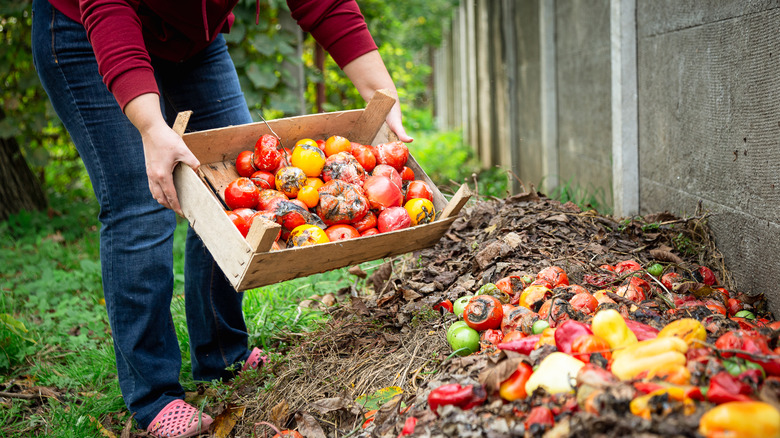
Coldsnowstorm/Getty Images
Compost is a blend of decomposed organic matter including kitchen scraps and yard waste which is a vital tool for promoting healthier plant growth. This natural soil-enhancement technique boosts your lawn’s vitality by balancing soil density and pH, offering an eco-friendly solution to boost quality. That means that you can improve the water retention capabilities of loose soils like sand with compost. Consequently, your grass can access essential nutrients and oxygen more effectively, resulting in a denser, greener, and more resilient turf.
Additionally, the enhanced water-holding capacity of compost helps maintain soil moisture, reducing the need for excessive watering during dry spells and nutrient run-off. But the best part about compost is that you can make it on your own with any organic household waste from your home. Compost is not just waste turned into gold; it’s a sustainable and organic approach to nurturing a thriving lawn while promoting environmental stewardship.
Switch to organic or all-natural fertilizers
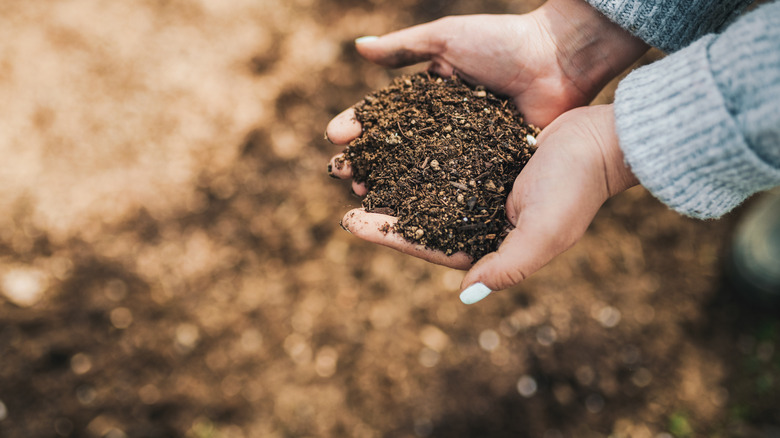
Vasil Dimitrov/Getty Images
Switching to organic fertilizers is a smart and eco-conscious choice for cultivating healthier crops and sustaining our environment. Organic fertilizers are derived from natural sources like plant matter, animal by-products, or minerals. What sets them apart from synthetic fertilizers is their minimal need for decomposition. Instead of relying on microbial breakdown, they deliver essential nutrients directly to the soil. Unlike compost, organic plant food has targeted nutrient provision, including phosphorus, potassium, and nitrogen.
Organic and natural fertilizers can also be more sustainable because they release nutrients gradually. While they often aren’t quick fixes, many will impact the health of your grass for months or even years into the future. They are also becoming more readily available. Nature-based products like Milorganite, Espoma, and even Scott’s Natural Lawn food can be ordered online or purchased at local hardware stores. Or, you can make your own carefully formulated and research-based mixture with your lawn’s specific needs in mind.
Water your lawn correctly
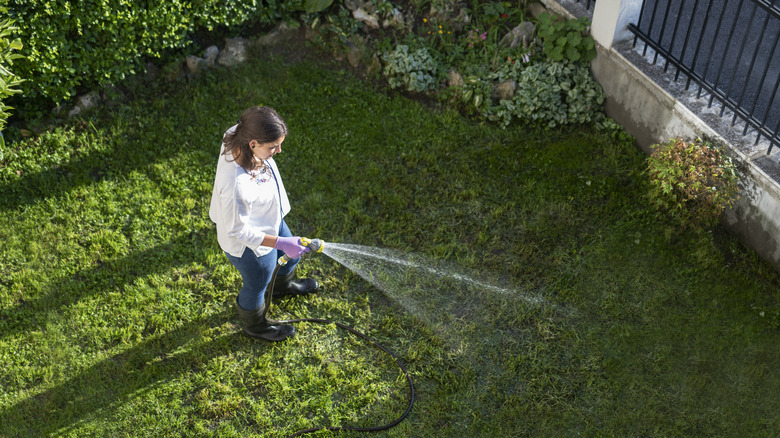
Artistgndphotography/Getty Images
Proper lawn watering is a vital aspect of maintaining a lush, green landscape, and it begins with avoiding the most significant mistake: overwatering. Overly saturated soil can spell disaster for your lawn, causing problems such as suffocated plants, shallow root systems, leaf scorching, and stunted growth. To avoid excessive watering, irrigate your lawn at a frequency of once every four to eight days, depending on factors like climate and soil type. This ensures your grass receives the moisture it needs without drowning the roots.
But just how much water does your lawn need? Aim for a weekly total of 1 to 1.5 inches of water. Measure the amount by placing a rain gauge or empty tuna can in your yard during watering sessions to gauge the water accumulation. This targeted approach encourages deep-root growth, making your turf more resilient and better able to withstand drought conditions.
Use natural weed control methods
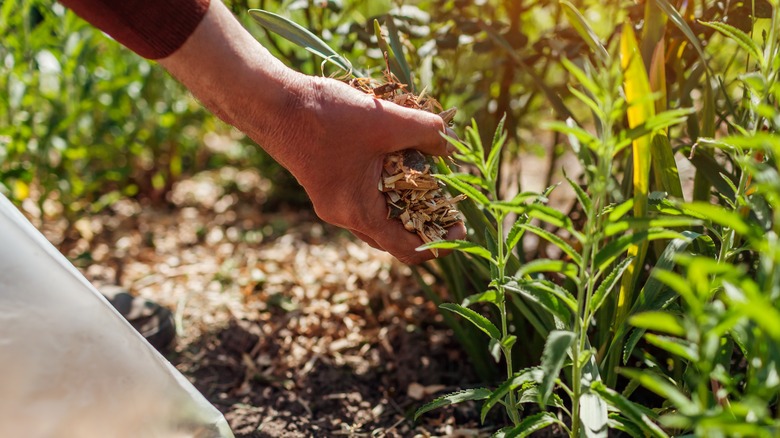
Mariia Boiko/Shutterstock
Rather than resorting to harsh pesticides, consider the following alternatives: mulching, vinegar-based herbicides, and corn gluten meal. These natural remedies offer several advantages while being gentle to the environment. Mulching is a tried-and-true technique that involves covering the soil with organic materials like wood chips or straw. This method not only suppresses weed growth by blocking sunlight but also helps retain soil moisture and improve its overall health. But, make sure you avoid common mulching mistakes like applying too much or putting it down too early in the year.
Vinegar-based herbicides, often made from household vinegar mixed with other ingredients, are effective in eliminating young weeds. They provide a safer alternative to chemical sprays. Corn gluten meal, a natural pre-emergent herbicide, inhibits weed seed germination. It’s a proactive approach to preventing weed infestations in the first place. Just remember that while these methods are eco-conscious and less harmful than synthetic chemicals, they are most effective against young weeds and may require consistent effort. To optimize results, consider combining natural weed control methods with other strategies such as hand weeding or mechanical cultivation.
Invest in integrated pest management
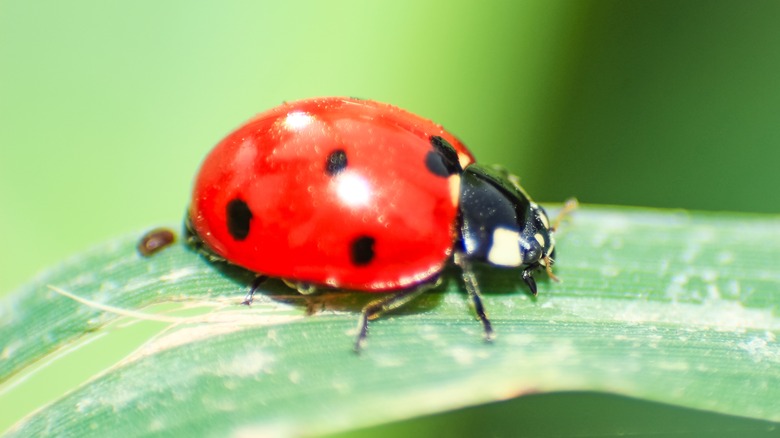
Lahore Qalandars7/Shutterstock
Integrated pest management (IPM) represents a forward-thinking, eco-conscious strategy for pest control that prioritizes harmony with nature. This holistic approach harnesses diverse techniques to effectively manage pests while minimizing environmental impact. Instead of relying solely on chemical pesticides or completely doing away with them, it employs a multifaceted approach to keep harmful insects away.
IPM programs integrate various strategies like monitoring, prevention, and intervention to minimize pest damage. This entails several vital steps. Firstly, selecting pest-resistant grass species, like tall fescue, reduces vulnerability. Second, introducing natural predators like ladybugs to control specific pests, such as aphids, minimizes the need for chemicals. Additionally, adjusting care practices is crucial. For example, efficient irrigation reduces water usage and discourages pests, as excess moisture can attract them. By adapting to specific environments and pest threats, IPM offers effective, environmentally friendly solutions, making it a good strategy for fostering a healthy, chemical-free lawn.


